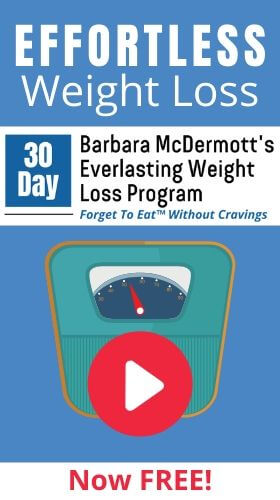Hyperinsulinemia… Huh?
Hyperinsulinemia.
It’s a big word.
And it’s an even bigger diagnosis.
Hyperinsulinemia is gaining mainstream status these days. One of my newest clients shared that her doctor told her, “you have hyperinsulinemia”, and she was wondering if I’d ever heard of it.
Ever heard of it?
I see it. Daily.
Walking around on legs.
Do you?
This new client doesn’t ‘have’ diabetes. Her blood sugar falls in the medically-approved normal blood sugar range.
But her weight gain has brought her to the range labeled ‘obesity’ and with it the extenuating consequences of fluid retention, inflammation and chronic pain. The doctor has encouraged her, once again, to ‘just lose some weight’.
When she shares this with me my internal reaction is “grrrrr.”
Watch The Mini-Seminar Below On How Hyperinsulinemia Sabotages Weight Loss
How Hyperinsulinemia Works… Against You
I meet people every day struggling in the place of “I can’t.” “I can’t lose weight.”
“Why can’t I lose the weight that the medical community’s telling me to lose?”
“Why aren’t I losing the weight that all my fitness trainers and group exercise instructors tell me I should be losing?” “They tell me to work harder, push myself more, and add three more classes or workouts to my week.” “I do.” “I spend more money and more time and more energy but I don’t get more results.”
“I can’t lose the weight.”
Then the celebrity nutritionists and life-coaches say,
“Watch what you eat.” , you know, “watch your carbs, watch your fat, watch your portion size, watch your calories.”
There’s a lot of watching going on. But regardless of all the watching, waistline continues to expand.
And there’s also, “watch your thoughts, watch your stress level, watch your attitude” the not-so-subtle message that you are the cause of your current weight struggle. Not enough hustle. Not enough discipline. Not enough ‘minding’, paying attention, focus.
Excuse me.
My newest client is the epitome of focused-living. Like Oprah. Intelligent. Kind. Active. Whole foods oriented.
And…..overweight.
And indeed, “I can’t lose weight” is a 100% accurate science-backed statement of truth. Weight loss cannot happen when our internal hormonal environment is off kilter.
Not Losing Weight… Blame The Insulin
It’s not because of anything she is or is not doing. It’s the insulin. And in her case, and for millions of others who are struggling, it is more specifically, the condition called hyperinsulinemia.
Let’s science it out.
HYPER means high or lots. When we think of a child who is overly active they are labeled ‘hyperactive’, right? Hyper means a higher level or amount than what is considered normal.
EMIA is a science term used when referring to something that has to do with the blood.
So, hyper-insulin-emia, means higher than normal amounts of insulin in the blood. A person with hyperinsulinemia has lots of insulin in their blood.
What Is Insulin and Why Is It In My Blood?
Insulin is your body’s blood sugar lowering hormone. Insulin is in your blood because your pancreas released it in response to a rising change in your blood sugar.
How Does Insulin ‘Lower’ Blood Sugar?
Insulin is a hormone. Hormones are signaling compounds. They ‘tell’ parts of your body to do a particular action.
In order for insulin to ‘lower’ your blood sugar it signals all the cells of your body to allow some of your blood sugar in. By allowing some blood sugar in, there’s less sugar left in your blood.
That’s how blood sugar ‘lowers’. Blood sugar doesn’t disappear or get cancelled out…it gets dispersed throughout your body.
Generally, the process goes something like this.
Your bloodstream is overwhelmed with the glucose generated from the meal or snack you just ate.
The Glucose Source Is The Carbohydrate Portion of Your Meal
Fat contributes no glucose. Fat doesn’t stimulate an insulin response.
Protein can contribute some glucose. Protein stimulate some degree of insulin response.
But carbohydrate? Carbohydrate is glucose.
So carbohydrate is THE insulin stimulating category of food. Every starch (complex) and every sugar (simple) digests down to glucose. Your blood is quickly flooded with glucose, also called sugar.
That sugar is just one thing… fuel.
LEARN MORE ABOUT WHY ALL CARBOHYDRATES ARE SUGAR
That ‘just added’ fuel gets delivered, via your bloodstream, to cells requiring fuel all over your body.
Your bloodstream delivers the sugar fuel.
And insulin is the gatekeeper that signals cells to take sugar in.
So, insulin is the hormone that enables the blood sugar to move from your bloodstream into cells. Cells only utilize glucose as a fuel. And cells will allow only as much glucose in as they require.
What Happens When We Take In More Glucose Than Our Body Needs?
Cells Have a Limited Glucose Capacity
Cells have a stringent capacity threshold and will not respond to insulin if they don’t require any fuel at that time. Cells are not equipped to hold extra glucose for later use.
Your body does, however, have two glucose storage capabilities. Your muscles and your liver are able, to some degree, store glucose.
Your Muscles & Liver Can Store Some Of The Glucose
If there is space available, your muscles and liver will take in some glucose, blood sugar, and convert the glucose to its storage form, glycogen. This is your body’s immediate fuel reserve insurance policy.
The liver preferentially supports your brain’s high energy needs. And your muscles’ glucose stores are primarily reserved for emergency-like, high energy demanding actions.
Let’s return to the initial post-meal blood sugar surge. You know where the glucose goes. But you also know that both the cells and the muscle/liver storage capacities are limited. What happens when we take in more fuel aka blood sugar, than our body requires?
Where Does The Extra Blood Sugar Go?
It goes into adipose tissue where it converts to stored fuel…fat.
We can say, “Carbohydrate is waist weight.”
Carbohydrate IS blood sugar. Blood sugar is fuel. Fuel either gets used or stored.
Protein and fat have other functions within us.
But sugar, or the glucose that was carbohydrate, is only fuel. We either use it or store it.
And here’s the kicker.
Insulin Intelligence
The amount of insulin your body releases is in direct proportion to the amount of sugar you just put into your bloodstream.
Without your even thinking about it, insulin matches your carbohydrate intake. This correlation is what I call insulin intelligence.
Your body matches the amount of added sugar to your blood with the exact appropriate amount of insulin required to move it out of your blood and into your body.
This all sounds quite reasonable and nothing to be so alarmed about.
However, what is alarming is how the rest of your myriad of body functions react to the presence of insulin.
For the purpose of weight loss, we’ll look at just one ill-effect of the presence of elevated insulin.
How High Insulin Levels Impact Your Ability To Loss Weight / Body Fat
The “Thought To Be Healthy” Path To Hypernsulinemia
Picture a conscientious healthy living-minded individual. Exercise. Yoga. Whole Foods.
But still with the tell-tale ring around their middle.
Their whole foods approach to eating may have misled them down the rabbit hole of frequent insulin stimulation.
Through the years their body develops a resistance to insulin’s signal. Too much whole food carbohydrate fuel, too often.
Because their cells don’t respond to insulin as easily as they did ten years ago, their pancreas starts releasing more insulin, and more insulin. Now their blood stream carries more insulin more often.
Let’s look At How Insulin Sabotages Weight Loss
When insulin is elevated, lipase production is halted. Lipase is your fat burning enzyme.
When insulin is turned on, fat burning is turned off, disabled, shut down.
In fact, body fat is trapped or locked in storage. Body fat burning (weight loss) cannot go on when insulin is dominating your internal environment.
Isn’t it interesting that the body prioritizes its functions?
Blood sugar dispersal always trumps body fat dispersal. With hyper amounts of insulin you are virtually trapped in body fat lockdown.
What About The Carbohydrate Quality?
And the further injustice is that it doesn’t matter what kind of carbohydrate you eat.
It’s the quantity of carbohydrate.
Organic. Processed. Good. Bad. Complex. Simple. If I had a nickel for every time I’ve heard the outrage, “But I only ever eat the g-o-o-d carbs!” Crikey.
If it’s a carbohydrate and it’s more than what your body needs for energy you’ll be wearing it around your waist.
When It Comes To Losing Body Fat, Insulin Rules
And despite all the effort, exercising, changing the way we eat, changing the way we think, practicing gratitude and mindfulness, wearing a fitness gadget, walking 10,000 steps, pedaling, punching, body attacking, crunching,….
Unless you quiet your insulin riot, you remain trapped in body fat accumulation mode.
Why Exercise For Weight Loss Fails
With high insulin, body fat use is disabled. You are unable to burn body fat. You will be fueling your exercise on sugar.
And when your sugar-glucose runs low, rather than switching to body fat, you’ll steal protein from your muscles and convert that to more sugar. Muscle wasting happens to those with hyperinsulinemia.
Not cool.
The Hyperinsulinemia Solution – An Insulin Vacation
Resolving hyperinsulinemia requires a two-sided approach. The key is giving your body a much needed break from insulin.
I call it an insulin vacation.
To be clear, no one can ever be without insulin completely. The strategy is to be in a state of less insulin or the least amount of insulin possible.
This is accomplished in a surprisingly pleasant way.
1.) Eat foods that stimulate the least possible insulin release.
2.) And create longer periods of time between feedings.
Why? Because it’s when you’re not eating that your body experiences the greatest relief from insulin.
Think of it this way. Your body is trapped and compromised by insulin. You need to minimize the insulin burden.
Shifting from foods that stimulate insulin to foods that don’t stimulate insulin is your winning hand.
The Insulin Vacation Benefits
If you play your cards right, you just might find what I’ve found. That this simple action delivers you to cravings-free peace, satiety you haven’t felt since you were a kid, and mental and physical energy you thought were only for the young to enjoy.
Insulin Minimized = Body Fat Mobilized
Mobilize body fat. Now that sounds like a plan!
Stop hyperinsulinemia in its tracks.
Reverse weight gain and pain, both physical and emotional.
Get the results you seek by working in alignment with metabolic principles..
There’s Action… Then There’s RIGHT Action
You’ve probably done lots of action. Just like my newest client.
Now it’s time to apply Right Action.
I know you’ll be glad you did.
Why will you be glad? Because burning unwanted body fat and forgetting to eat go hand in hand.
When insulin quiets and you tap into body fat stores again, you dine in on your body fat.
And your appetite evaporates.
Forgetting to eat becomes commonplace. It’s a great place to live.
Watch More Video Lessons From Barbara McDermott – Visit Our YouTube Channel

About Barbara McDermott
Regarded as America's #1 Insulin Suppression Coach, Barbara is the co-founder of SHIFT Health & Wellness Solution, and the best-selling author of the groundbreaking book, ‘FOOD B.S.’, With SHIFT, Barbara brings common sense to nutrition, weight loss and health gain. Her refreshing, no nonsense approach to uncovering the truth using non-negotiable rules of science demystifies food and how to defeat chronic disease once and for all.




No comments yet.